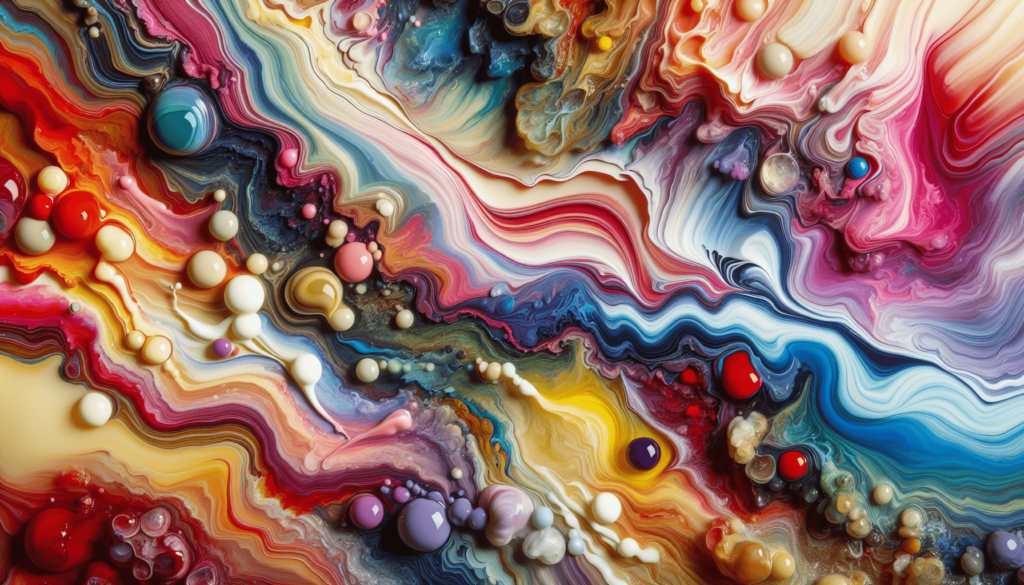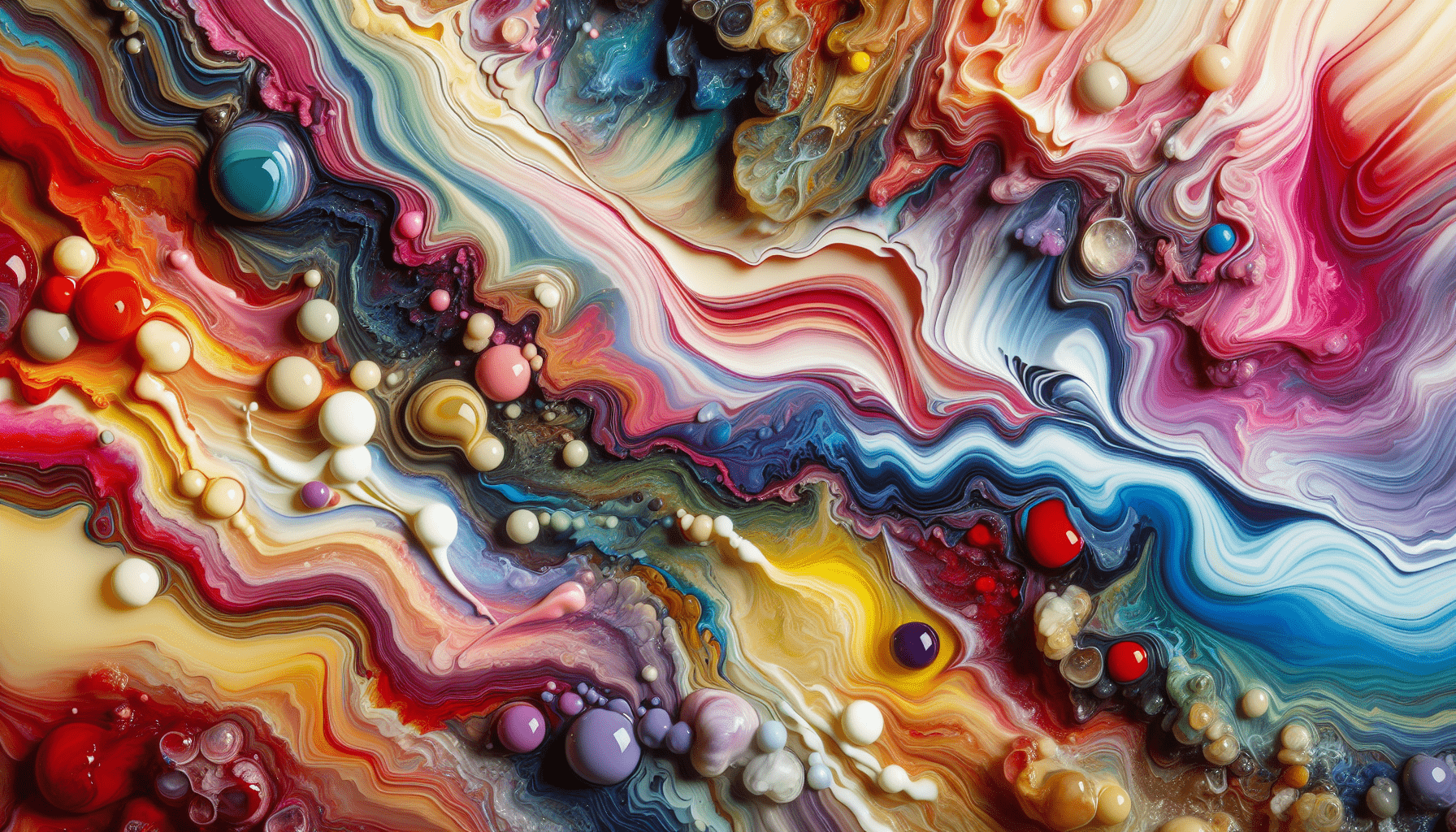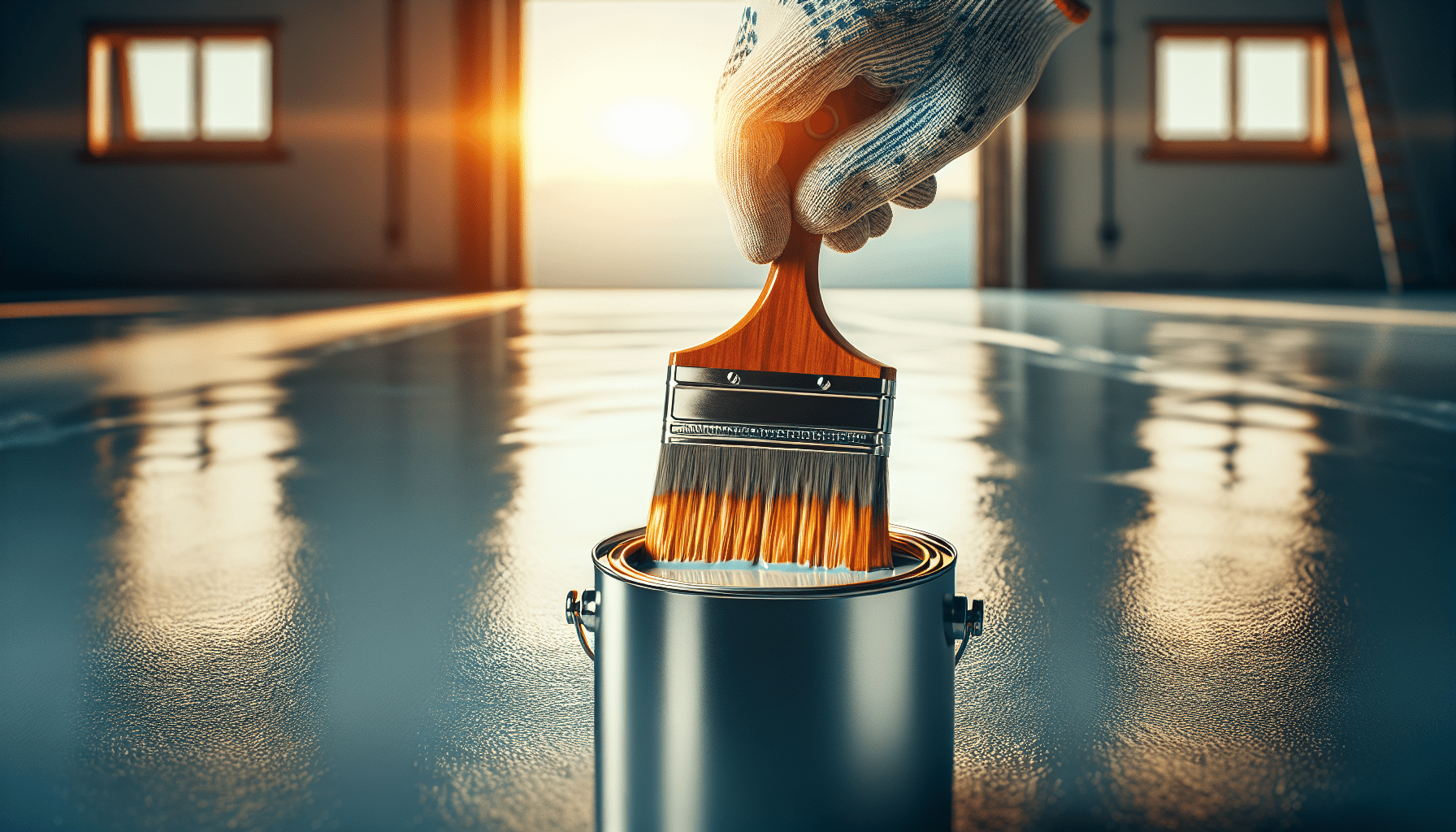In the world of art and crafts, many enthusiasts and professionals alike often explore new techniques and combinations to create unique and stunning pieces. One popular question that frequently arises is whether or not one can mix acrylic paint with epoxy resin. This intriguing topic has sparked debates and curiosity among artists, as they seek to understand the compatibility and creative possibilities that can arise from such a combination. In this article, we will delve into the world of acrylic paint and epoxy resin, exploring the factors to consider and the potential outcomes of their fusion. So, whether you are a seasoned artist or a curious beginner, join us as we unravel the mysteries of mixing acrylic paint with epoxy resin and unlock a world of endless creative possibilities.

Compatibility of Acrylic Paint and Epoxy Resin
When it comes to mixing acrylic paint and epoxy resin, it is important to consider the compatibility of these two materials. Both acrylic paint and epoxy resin have different chemical compositions and curing processes, which can impact the final result of your artwork or project.
Chemical Composition
Acrylic paint is made up of pigment particles suspended in an acrylic polymer emulsion. The emulsion allows the paint to dry quickly and forms a solid, durable film when it cures. On the other hand, epoxy resin is a two-part mixture consisting of a resin and a hardener. When the two parts are mixed together, a chemical reaction occurs, resulting in a strong and durable material.
Curing Processes
Acrylic paint and epoxy resin also differ in their curing processes. Acrylic paint cures through the process of evaporation, where the water and solvents in the paint evaporate, leaving behind a solid film. Epoxy resin, on the other hand, cures through a chemical reaction between the resin and hardener, which leads to the formation of cross-linked polymers.
Advantages of Mixing Acrylic Paint with Epoxy Resin
While mixing acrylic paint with epoxy resin may seem unconventional, it can offer several advantages in certain artistic or decorative applications.
Enhanced Visual Appeal
Mixing acrylic paint with epoxy resin can enhance the visual appeal of your artwork or project. The vibrant colors of the acrylic paint can be preserved and intensified when combined with the glossy and transparent finish of epoxy resin. This combination can create depth, richness, and a unique visual effect.
Increased Durability
By mixing acrylic paint with epoxy resin, you can significantly increase the durability and longevity of your artwork or project. Epoxy resin forms a hard, protective coating that can withstand wear, scratches, and fading. This added protection can ensure that your artwork or project remains in excellent condition over time.
Easy Application
Another advantage of mixing acrylic paint with epoxy resin is the ease of application. Acrylic paint is widely available and easy to work with, making it a popular choice among artists and crafters. Mixing it with epoxy resin allows for a smooth and consistent application, providing a seamless and professional finish.
Considerations before Mixing Acrylic Paint with Epoxy Resin
Before you dive into mixing acrylic paint with epoxy resin, there are some important considerations to keep in mind to ensure the best results.
Proper Ratios
It is crucial to use the proper ratios of acrylic paint and epoxy resin when mixing them together. This will not only ensure the desired color and consistency but also maintain the integrity of the epoxy resin’s curing process. Using too much or too little acrylic paint can result in an unsuccessful curing process and impact the overall quality of your project.
Color Changes
When mixing acrylic paint with epoxy resin, it is important to consider the potential color changes that may occur. The transparency of epoxy resin can alter the appearance of the acrylic paint, especially when it dries. Colors may become more vibrant, muted, or even change altogether. It is advisable to conduct test mixes and experiments to understand how different colors will react when combined with epoxy resin.
Effects on Hardening and Curing
The introduction of acrylic paint to epoxy resin can affect its hardening and curing processes. The addition of acrylic paint can increase the curing time and may alter the resin’s chemical reaction. It is essential to carefully follow the manufacturer’s instructions for both the acrylic paint and epoxy resin to ensure proper curing and optimal results.
Safety Precautions
When working with epoxy resin, it is crucial to take safety precautions. Epoxy resin is a chemical substance that can release toxic fumes, so it is important to work in a well-ventilated area and wear appropriate personal protective equipment, such as gloves and goggles. Additionally, avoid direct skin contact with epoxy resin and make sure to read and follow the safety guidelines provided by the manufacturers of both the acrylic paint and epoxy resin.
Preparing Acrylic Paint for Mixing with Epoxy Resin
To achieve the best results when mixing acrylic paint with epoxy resin, proper preparation of the acrylic paint is necessary.
Choosing the Right Type of Acrylic Paint
When selecting acrylic paint for mixing with epoxy resin, it is important to choose a high-quality, artist-grade paint. These paints are formulated with superior pigments and binders, ensuring better compatibility with the epoxy resin. Avoid using student-grade or low-quality acrylic paints, as they may contain fillers or additives that can negatively interact with the epoxy resin.
Selecting Colors and Pigments
The choice of colors and pigments can greatly impact the final result when mixing acrylic paint with epoxy resin. It is advisable to select colors that are lightfast and have good color retention properties. Lightfast pigments are less likely to fade or change over time when exposed to light, ensuring the longevity of your artwork or project.
Handling and Processing Acrylic Paint
Before mixing acrylic paint with epoxy resin, it is important to properly handle and process the paint. Make sure the paint is well-mixed and free of any clumps or lumps. Use a palette knife or stirring stick to stir the paint, ensuring that the pigments are evenly distributed throughout the paint. This will result in a smoother and more consistent mixture when combined with epoxy resin.

Mixing Acrylic Paint with Epoxy Resin
Once you have properly prepared the acrylic paint, you can proceed with the mixing process. Follow these steps to achieve a successful mixture of acrylic paint and epoxy resin.
Step-by-Step Process
- Measure the desired amount of epoxy resin and hardener according to the manufacturer’s instructions.
- Mix the epoxy resin and hardener thoroughly, ensuring that the two parts are fully combined.
- Gradually add the acrylic paint to the mixed epoxy resin, stirring gently to incorporate the paint. Take your time and avoid adding too much paint all at once.
- Continue stirring until the acrylic paint and epoxy resin are well mixed. Make sure there are no streaks or clumps of paint remaining in the mixture.
- Allow the mixture to sit for a few minutes to let any air bubbles rise to the surface. You can use a heat gun or torch to carefully remove any remaining bubbles.
Using a Mixing Medium
To achieve different effects and manipulate the viscosity of the mixture, you can consider using a mixing medium. A mixing medium can help thin out the mixture, making it easier to work with and allowing for smoother application. Experiment with different types and ratios of mixing mediums to achieve your desired results.
Mixing Ratios
The ideal mixing ratio of acrylic paint to epoxy resin can vary depending on the specific project or desired effect. It is advisable to start with a smaller amount of acrylic paint and gradually increase it until you achieve the desired color intensity. Typically, a ratio of 1 part acrylic paint to 10 parts epoxy resin is a good starting point. However, it is important to conduct test mixes to find the ratio that works best for your specific project.
Tips for Achieving Desired Effects
When mixing acrylic paint with epoxy resin, there are several tips and techniques you can employ to achieve your desired effects and create unique artworks or decorative items.
Experimenting with Different Ratios
To achieve different color intensities, transparency levels, or visual effects, don’t be afraid to experiment with different ratios of acrylic paint to epoxy resin. By varying the amount of acrylic paint in the mixture, you can create subtle or bold color variations, emphasizing different aspects of your artwork or project.
Creating Unique Patterns and Textures
Mixing acrylic paint with epoxy resin opens up possibilities for creating unique patterns and textures. You can try techniques such as pouring, swiping, or dipping to achieve interesting and dynamic effects. By layering different colors or using different application methods, you can create depth and interest in your artwork.
Using Multiple Layers
Building up layers of mixed acrylic paint and epoxy resin can add depth and dimension to your artwork or project. By allowing each layer to cure before applying the next, you can create a multi-dimensional effect. This technique is particularly effective when creating abstract or mixed media artworks.
Application and Drying
Once you have mixed the acrylic paint and epoxy resin, it is essential to properly apply and allow for adequate drying and curing time.
Surface Preparation
Before applying the mixed acrylic paint and epoxy resin, make sure the surface is clean, dry, and free of any dust or debris. Prepare the surface according to the manufacturer’s instructions, which may include sanding or priming. Proper surface preparation will ensure optimal adhesion and a smooth finish.
Applying the Mixed Acrylic and Epoxy Mixture
Apply the mixed acrylic paint and epoxy resin mixture using a brush, roller, or other desired application method. Make sure to spread the mixture evenly and avoid leaving any thick or uneven areas. Pay attention to the edges and corners, ensuring that the mixture covers the entire surface.
Curing and Drying Time
The curing and drying time of the mixed acrylic paint and epoxy resin will depend on various factors, including the ambient temperature and humidity. Follow the manufacturer’s instructions for the recommended curing and drying time. It is important to allow adequate drying and curing time to ensure a durable and properly cured finish.
Finishing and Protection
To enhance and protect the mixed acrylic paint and epoxy resin, proper finishing and protection techniques should be employed.
Sanding and Polishing
Once the mixture has fully cured, you can sand and polish the surface to achieve a smooth and glossy finish. Start with a lower grit sandpaper and gradually work your way to a higher grit to remove any imperfections or unevenness. Follow up with a polishing compound or polishing pad to bring out the shine of the epoxy resin.
Applying Protective Coatings
To further protect the mixed acrylic paint and epoxy resin, you can consider applying a protective coating. There are various options available, such as clear varnish or UV-resistant coatings. These coatings can help prevent yellowing, fading, or damage caused by UV rays, chemicals, or moisture. Follow the manufacturer’s instructions for proper application techniques and drying time.
Common Issues and Troubleshooting
When working with mixed acrylic paint and epoxy resin, it is not uncommon to encounter some issues. Here are a few common issues and ways to troubleshoot them.
Bubbles and Air Pockets
Bubbles and air pockets can form within the mixed acrylic paint and epoxy resin mixture, resulting in an uneven or textured surface. To minimize this issue, you can gently stir the mixture to release any trapped air bubbles. Additionally, using a heat gun or torch to carefully pass over the surface can help remove any remaining bubbles. However, be cautious not to apply too much heat or hold the heat source too close to the surface, as it can cause damage to the epoxy resin.
Improper Curing
If the mixed acrylic paint and epoxy resin mixture does not cure properly, it may indicate an issue with the mixing ratios or curing conditions. Double-check that you have followed the proper mixing instructions and ratios. Additionally, ensure that the environment in which the mixture is curing has the appropriate temperature and humidity levels as recommended by the manufacturer.
Cracking and Yellowing
Cracking and yellowing of the mixed acrylic paint and epoxy resin can occur for several reasons, including improper mixing ratios, insufficient curing time, or exposure to UV light. To mitigate these issues, make sure to follow the recommended mixing ratios and curing guidance. Additionally, avoid prolonged exposure to direct sunlight or UV light, as this can cause the epoxy resin to yellow over time. Applying a UV-resistant coating can help protect against yellowing caused by UV damage.
Cleaning Up and Storage
Once you have finished working with the mixed acrylic paint and epoxy resin, it is important to properly clean up your tools and store the materials for future use.
Tool and Workspace Cleanup
Clean any brushes, mixing containers, or other tools used during the mixing and application process. Follow the manufacturer’s instructions for cleaning the tools, as some materials may require specific cleaning agents or methods. Wipe down your workspace, removing any residue or spills to maintain a clean and safe environment.
Proper Storage of Materials
To ensure the longevity and preservation of your materials, it is important to store them properly. Seal the containers tightly to prevent air exposure and contamination. Store the mixed acrylic paint and epoxy resin mixture in a cool, dry place away from direct sunlight or extreme temperatures. It is also advisable to label the containers with the date of mixing for reference.
In conclusion, mixing acrylic paint with epoxy resin can offer numerous advantages in terms of enhanced visual appeal, increased durability, and ease of application. However, it is crucial to consider the compatibility of these materials, follow the proper ratios, and take necessary safety precautions. Through proper preparation, mixing techniques, and application methods, you can achieve desired effects and create stunning artworks or decorative projects. Remember to allow adequate drying and curing time, apply protective coatings, and troubleshoot common issues that may arise. With consistent practice and experimentation, you can master the art of mixing acrylic paint with epoxy resin and unlock a world of creative possibilities.



